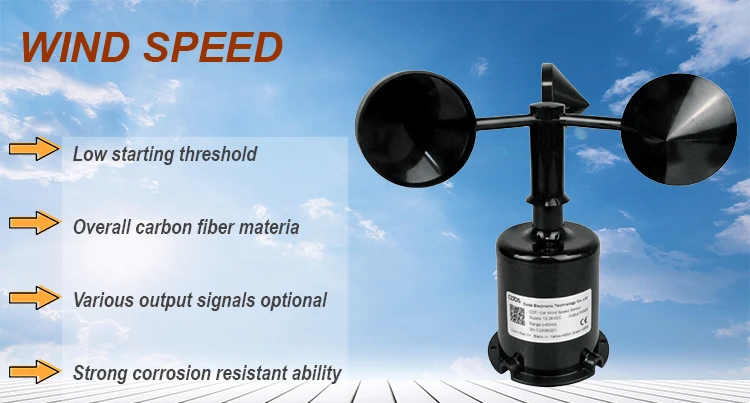
,文章长度在1000字左右。
html
An Instrument to Measure Wind Speed Accurately
Wind speed is a critical meteorological parameter that influences weather forecasting, aviation, marine navigation, and renewable energy production. To measure wind speed accurately, specialized instruments called anemometers are used. These devices come in various designs, each suited for specific applications and environments.
Types of Wind Speed Measuring Instruments
Several types of instruments are designed to measure wind speed, each with unique mechanisms and advantages:
1. Cup Anemometer
The cup anemometer is one of the most common instruments for measuring wind speed. It consists of three or four hemispherical cups mounted on horizontal arms, which rotate when exposed to wind. The rotation speed is proportional to the wind speed, and the data is recorded electronically or mechanically.
2. Vane Anemometer
A vane anemometer, also known as a windmill anemometer, uses a propeller-like blade that spins in response to wind. The device often includes a tail vane to align itself with the wind direction, providing both speed and directional data.
3. Hot-Wire Anemometer
Hot-wire anemometers measure wind speed by detecting changes in the electrical resistance of a heated wire as wind cools it. These instruments are highly sensitive and ideal for low-speed airflow measurements in laboratories or HVAC systems.
4. Ultrasonic Anemometer
Ultrasonic anemometers use sound waves to determine wind speed. They measure the time it takes for ultrasonic pulses to travel between transducers, which is affected by wind speed and direction. These devices are durable, require no moving parts, and are widely used in weather stations.
5. Laser Doppler Anemometer
Laser Doppler anemometers (LDAs) use laser beams to detect the velocity of particles in the air. This non-intrusive method is highly accurate and is often used in research and industrial applications.
How to Choose the Right Instrument
Selecting the appropriate instrument to measure wind speed depends on several factors:
- Application: Different environments (e.g., open fields, laboratories, or industrial sites) require specific anemometer types.
- Accuracy: High-precision applications, such as scientific research, demand instruments like ultrasonic or laser Doppler anemometers.
- Durability: For harsh outdoor conditions, robust designs like cup or vane anemometers are preferable.
- Cost: Budget constraints may influence the choice between mechanical and electronic models.
Applications of Wind Speed Measurement
Accurate wind speed measurement is essential in various fields:
1. Weather Forecasting
Meteorologists rely on anemometers to predict weather patterns, storms, and wind-related hazards.
2. Aviation and Marine Navigation
Pilots and sailors use wind speed data to ensure safe travel and optimize routes.
3. Renewable Energy
Wind turbines require precise wind speed measurements to maximize energy production and ensure operational safety.
4. Environmental Studies
Researchers study wind patterns to assess climate change, pollution dispersion, and ecosystem impacts.
Maintenance and Calibration
To ensure accurate measurements, anemometers require regular maintenance and calibration:
- Clean
Keyword: instrument measure wind speed